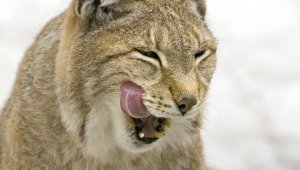- Define the species and number of animals as accurately as you can
- If you encounter tracks, measure the front paw’s width (and its length if the track belongs to a lynx or wolf)
- Give a detailed report with specific location information to a large carnivore contact person (preferably to one that lives near the location of the sighting)
You can find the name and phone number of the nearest large carnivore contact person on the Finnish Wildlife Agency's website (www.riista.fi) or by asking the local game management association. By reporting your sighting you are taking part in game animal research.
The large carnivore contact persons named by regional game management associations are trained experts who are well-versed in identifying large carnivore tracks and droppings. The Finnish network of large carnivore contact persons was created in the 1970s and today it spans over 1 700 hunting and game management enthusiasts. Every year tens of thousands of sightings are logged, which translates to a very significant number of volunteer man-hours.
The contact persons enter the sightings into the Tassu sighting system, where large carnivore researchers get their hands on the data. Sightings of litters, nests and large carnivores moving near populated areas are especially valuable for research purposes.
